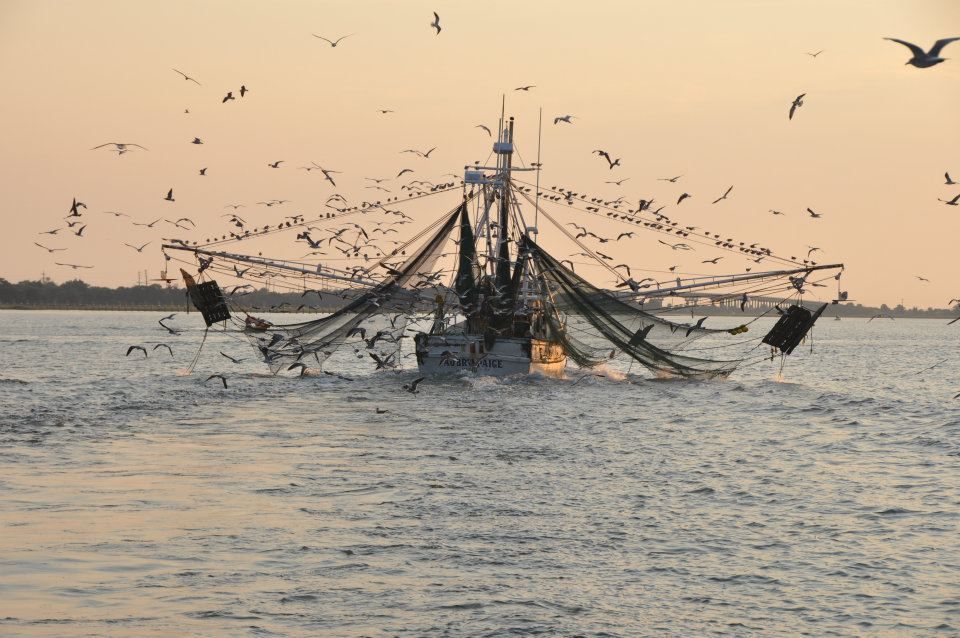The Rich History of Shrimping in Murrells Inlet, South Carolina

Murrells Inlet, South Carolina, is a coastal gem renowned for its rich maritime heritage and thriving seafood industry. Among its many contributions to the Lowcountry’s economy and culture, shrimping stands out as one of the most iconic traditions. This historic fishing village has long been a hub for shrimpers, providing fresh seafood to locals and visitors alike. But how did shrimping become such an integral part of Murrells Inlet’s identity? Let’s dive into its fascinating history.
Early Days of Shrimping in Murrells Inlet
Shrimping in Murrells Inlet dates back centuries, with indigenous tribes and early settlers harvesting shellfish and other seafood from the rich estuarine waters. However, commercial shrimping as we know it today began to take shape in the late 19th and early 20th centuries. The combination of warm coastal waters, tidal creeks, and an abundance of shrimp made Murrells Inlet a prime location for harvesting these delicious crustaceans.
The Rise of Commercial Shrimping
By the early 1900s, shrimping became a booming industry along the South Carolina coast. Wooden boats, often small and manually operated, were used to drag nets along the ocean floor. As technology advanced, shrimpers adopted more efficient trawlers equipped with larger nets and motorized winches. The demand for fresh seafood, particularly shrimp, skyrocketed in the mid-20th century, further solidifying Murrells Inlet’s place as a shrimping powerhouse.
The Role of Murrells Inlet in the Shrimping Industry
Murrells Inlet’s unique geography, with its network of tidal creeks and proximity to the Atlantic, created ideal conditions for shrimping. Generations of families in the area made their livelihoods off the water, passing down techniques and traditions that remain alive today. The town’s seafood markets and restaurants flourished, offering fresh, locally caught shrimp that drew in both tourists and seafood enthusiasts.
Shrimping wasn’t just an industry—it was a way of life. Festivals and community gatherings celebrated the local shrimping heritage, reinforcing the deep connection between the people of Murrells Inlet and the waters that sustained them.
Modern Shrimping and Sustainability Efforts
While shrimping remains a vital part of Murrells Inlet’s economy, the industry has faced challenges in recent decades. Increased regulations, environmental concerns, and competition from imported shrimp have posed obstacles for local shrimpers. However, efforts to promote sustainable fishing practices and protect the coastal ecosystem have helped preserve the industry.
Today, Murrells Inlet shrimpers use modern equipment and adhere to sustainable fishing regulations to ensure that shrimp populations remain healthy for future generations. Local seafood markets and restaurants continue to support these efforts by sourcing wild-caught shrimp from the area, keeping the tradition alive.
Experience the Legacy of Shrimping in Murrells Inlet
Visitors to Murrells Inlet can still witness the area’s shrimping legacy firsthand. Charter boats, seafood markets, and waterfront restaurants showcase the best of the local catch, offering an authentic taste of South Carolina’s shrimping history. Whether you’re dining at a local eatery or embarking on a fishing tour with Crazy Sister Marina, there are countless ways to experience the charm and history of shrimping in Murrells Inlet.
Conclusion
Shrimping has played a crucial role in shaping Murrells Inlet’s identity, from its humble beginnings to its status as a renowned seafood destination. While challenges persist, the dedication of local shrimpers and the community’s commitment to sustainability ensure that this beloved tradition will continue for years to come. Next time you enjoy a plate of fresh shrimp in Murrells Inlet, take a moment to appreciate the history and hard work behind every delicious bite.
